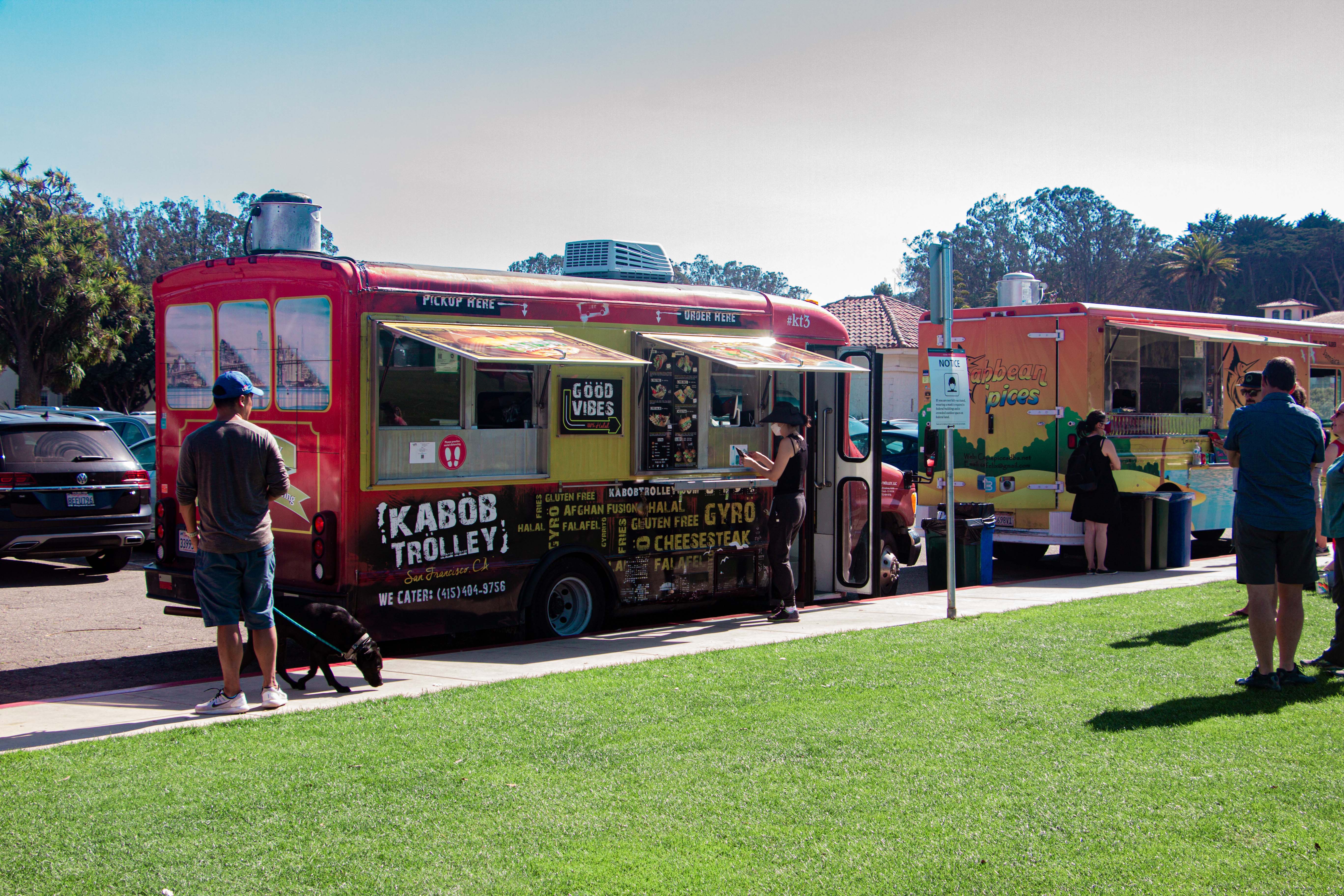
A food trucks village for the Berkeley Marina?

Anyone who goes to Berkeley Marina will notice the bumpy roads, the stunning views, and the scarcity of food. The Marina complex comprises 60 acres of upland and 40 acres of water but has merely three restaurants, all with floor-to-ceiling windows facing the ocean and San Francisco skyline. But the only casual eating spot is nearly a mile from the waterfront, so visitors who don’t want sitdown dining must bring along their own food.
That may soon change, now that the city of Berkeley is looking into setting up a food truck village at the southern tip of the Marina, in a gusty bayside parking lot that used to serve the now vacant Hs Lordships restaurant.
The city recently brought in a real estate service provider, Innovation Properties Group (IPG), authorizing IPG to “activate a portion of the parking lot for a food truck village and outdoor recreation space similar to a food truck village/recreation garden in San Francisco,” according to the City Council’s meeting agenda.
“The food trucks idea is now so popular,” said Roger Miller, senior management analyst with the Parks, Recreation and Waterfront Department, and designated spokesperson for Marina-related queries.
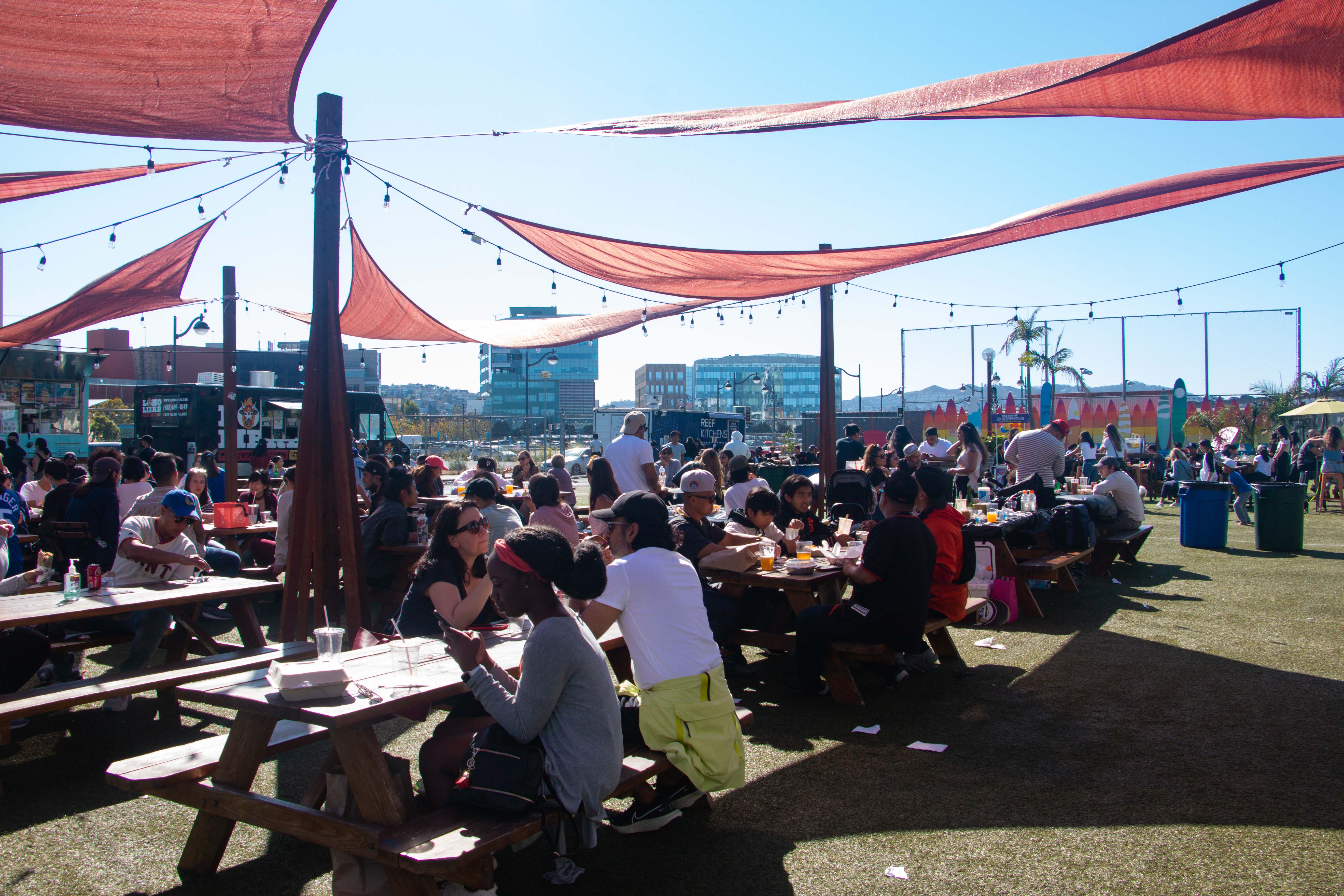
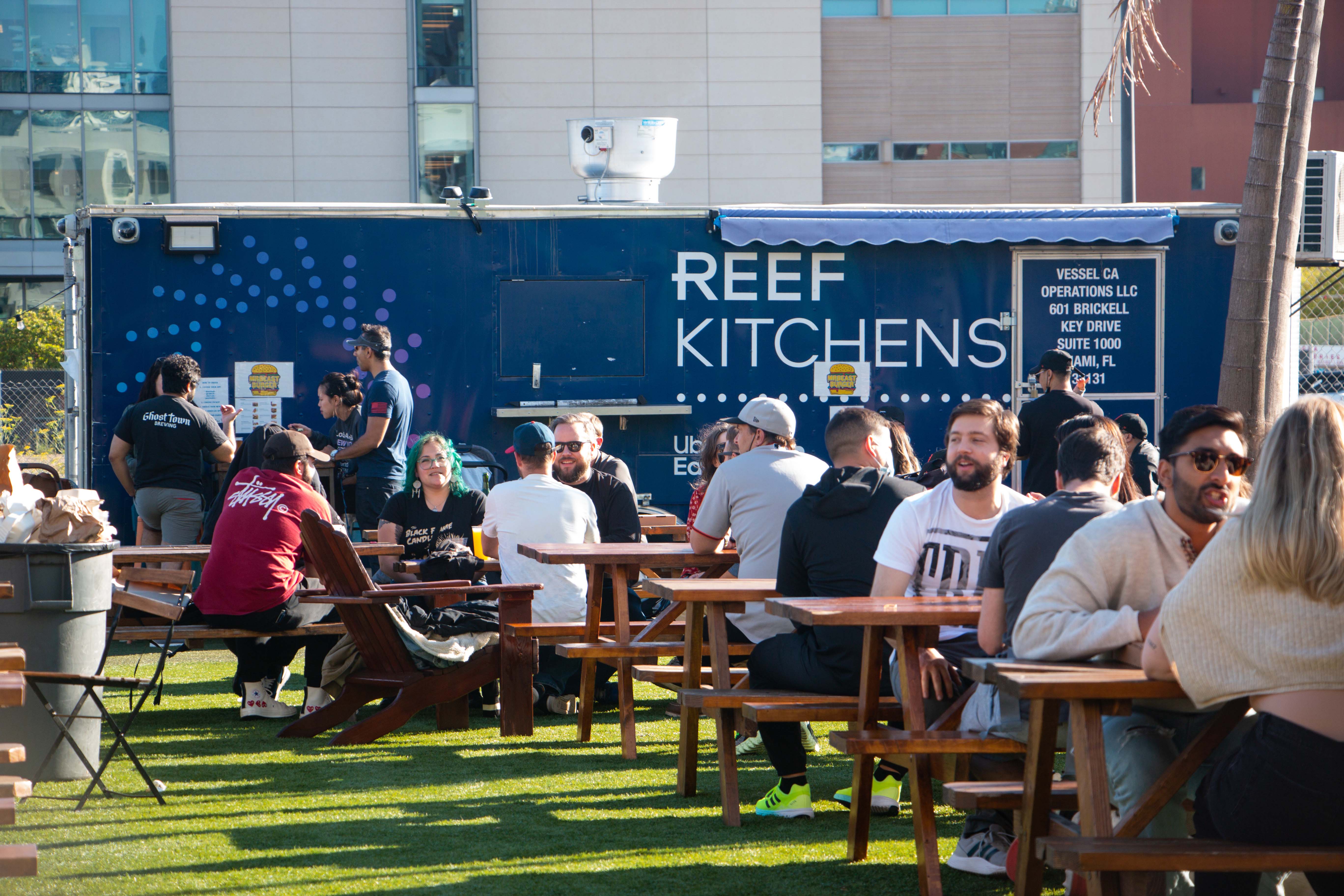
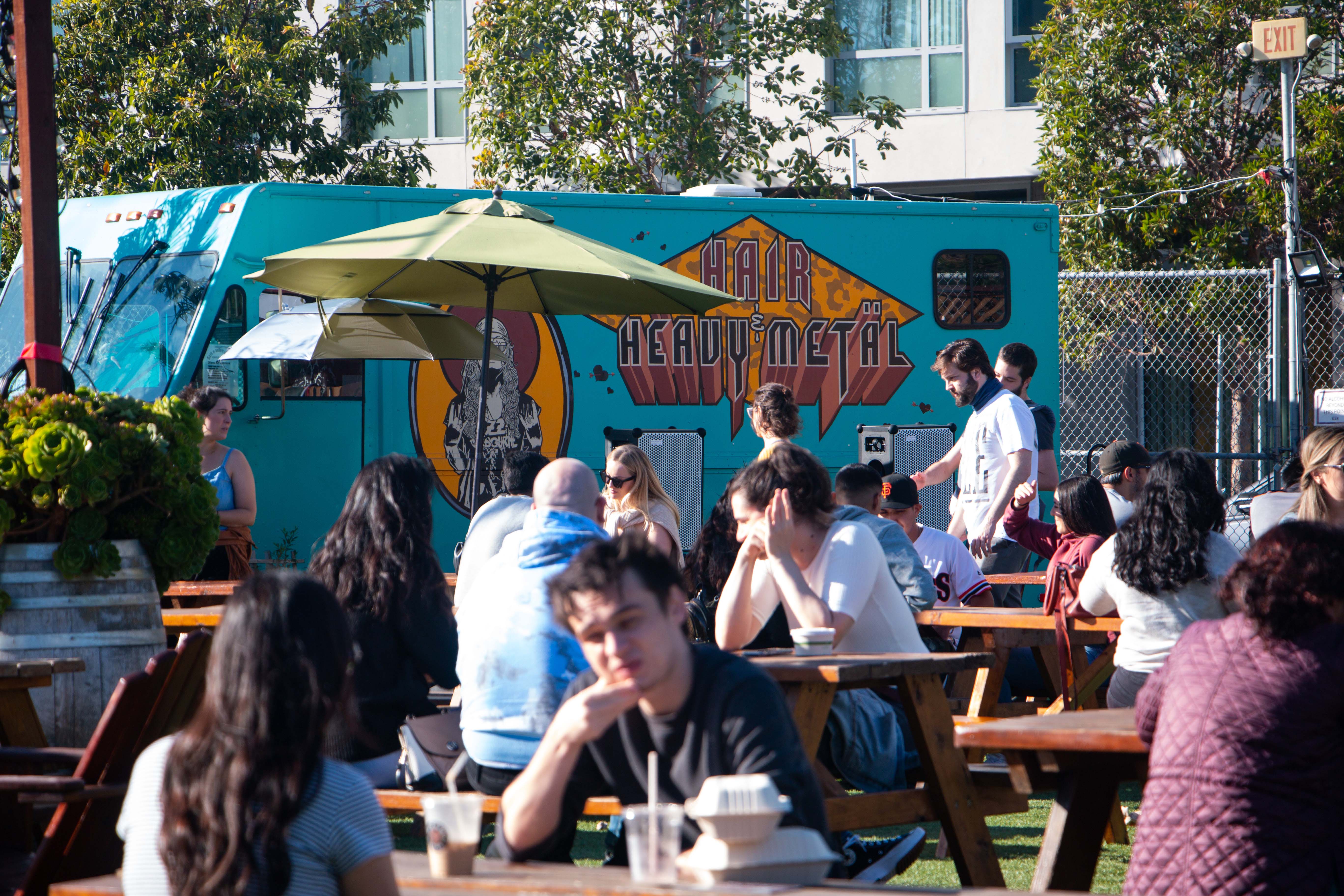
| On Weekends, SPARK Social SF food truck villages in Mission Bay in east San Francisco are full of visitors.
Miller cites such food truck markets as Fort Mason, ParkLab, and Presidio Picnic as examples of the kind of development the city hopes to foster. Presidio Picnic, he says, has developed into a “destination activity” thanks to the introduction of food trucks, and that’s what the city would like to see at the Marina.
“It’s near the ocean so it’s very beautiful,” Miller says of Presidio, “but it’s not near big train transportation, you need to make an effort to go there.”
Far from downtown San Francisco, the seven-acre Presidio Picnic is nestled in the heart of the national park, where families can enjoy the miles of hiking and biking trails as well as a view of the Golden Gate Bridge. Every weekend, the managing company Off the Grid brings in 3-4 trucks to provide food and beverages.
“Usually on Sunday in Presidio, it’s completely packed,” says Frantz Felix, owner of food truck Caribbean Spices. In his view, “80 to 100 meals will be a good business day.”
Originally from Haiti, Felix says he was encouraged to step into catering in 2014 because he loved cooking for friends and family. “Food trucks are not about frozen wings and frozen fries,” he says. “I don’t like the general idea the food from the trucks and from the restaurants are different. Why? They can be the same.”
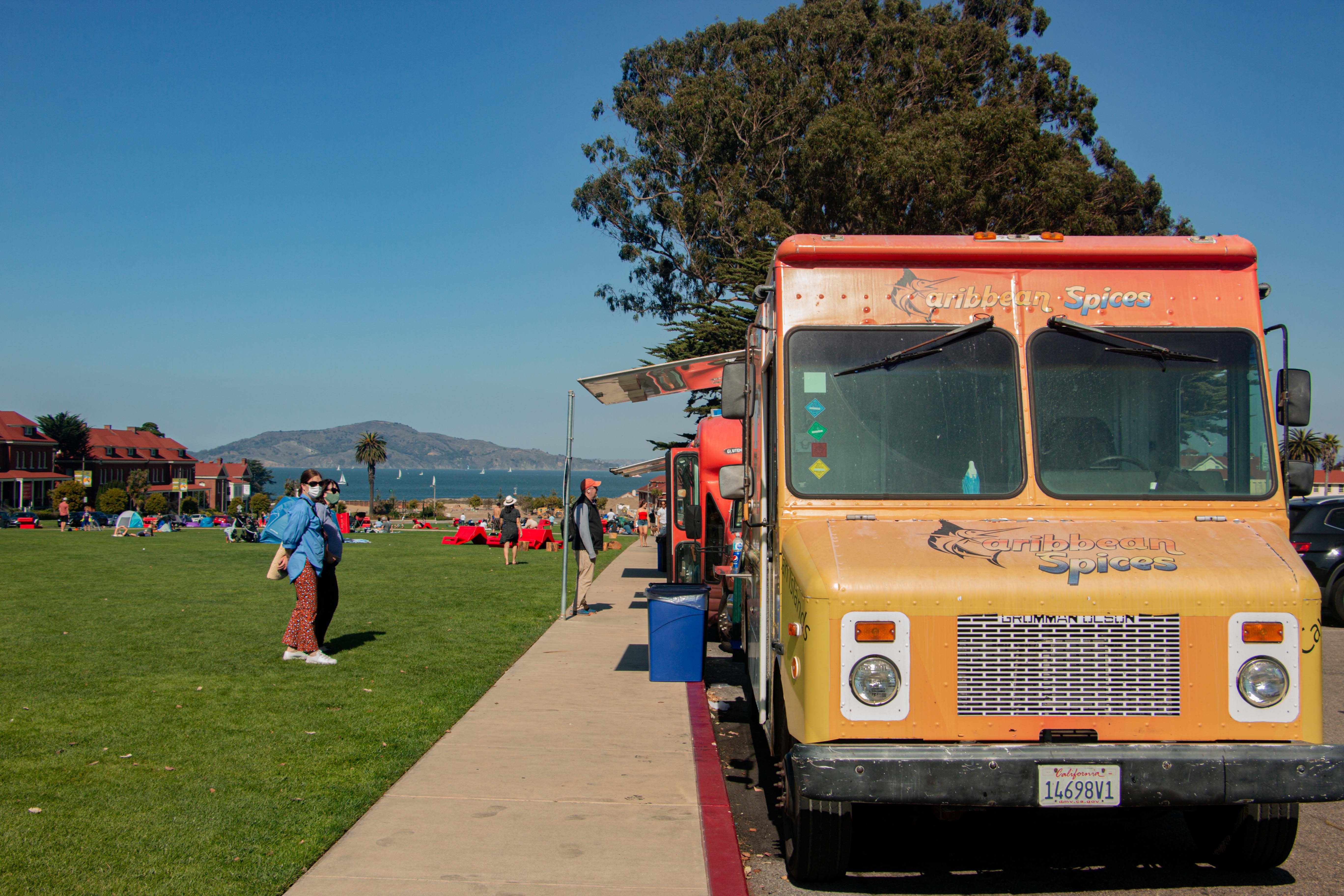
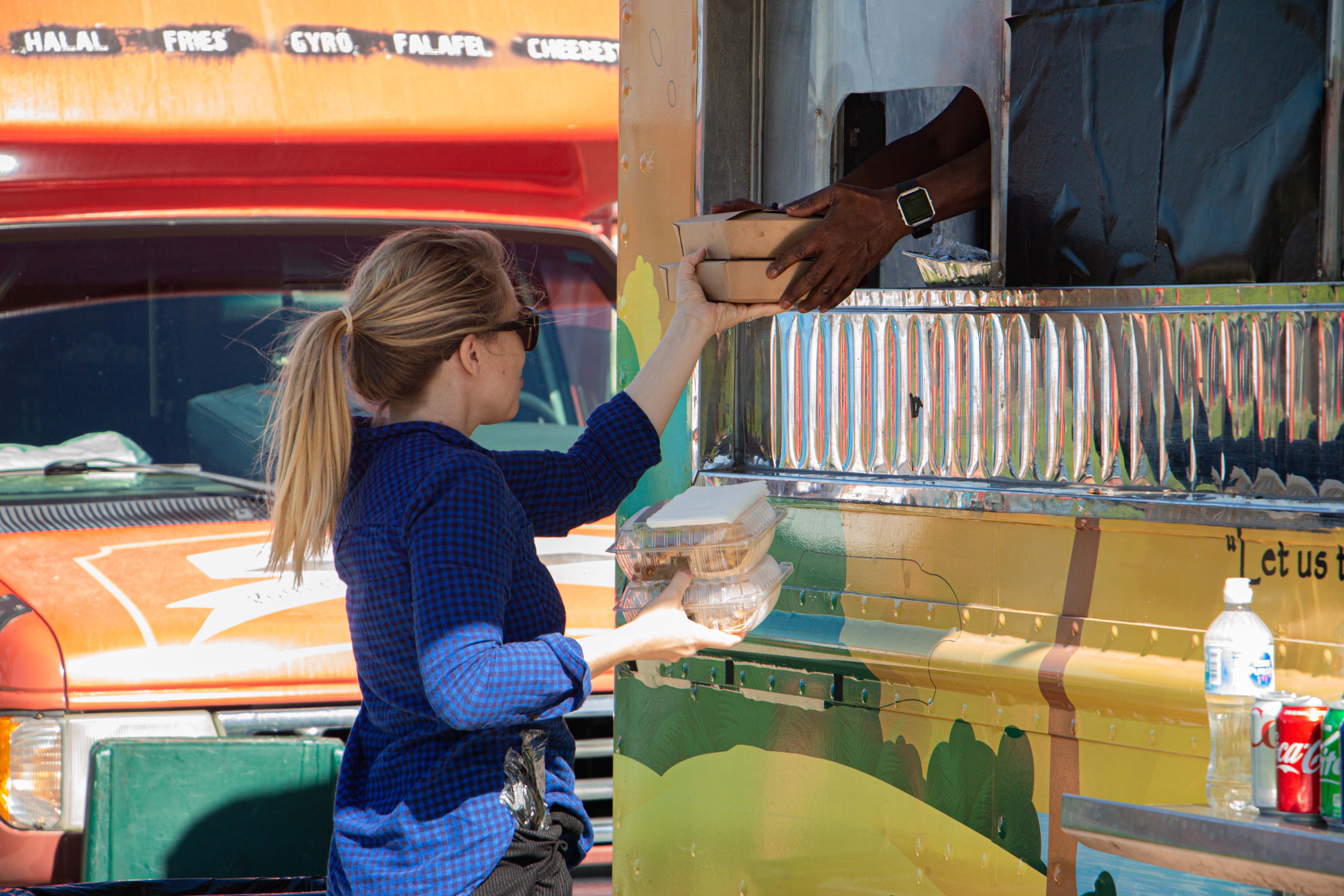
| Overlooking the Golden Gate Bridge, Presidio Picnic is nestled in the heart of the national park. Off the Grid brings in food trucks every weekend.
Ashlyn McFadden, an official with the SoMa StrEat Food Park team, which set up the ParkLab Garden and SPARK Social SF food truck villages in Mission Bay in east San Francisco, says she roots for Berkeley Marina’s plan. McFadden says her team helped transform Mission Bay from “more or less a food desert” to a vibrant neighborhood. “There were no grocery stores, no convenience stores, only a Subway sandwich shop, and a pie [store],” she says.
The neighborhood is now filled with cafés and dining establishments and hosts a mix of permanent and rotating food trucks. “Between the two parks, we host an average of 20 food trucks a day,” said McFadden. “We work on a list of about 150 food trucks, so it’s quite a variety that visits the spaces day over day,” she said.
“We have a line that never ends,” says supervisor David Alvarez at Chef Kitchen. ParkLab Garden is his favorite location, and Chef Kitchen sells up to 400 meals a day from a menu that ranges from $5 French fries to $18 California Burgers.
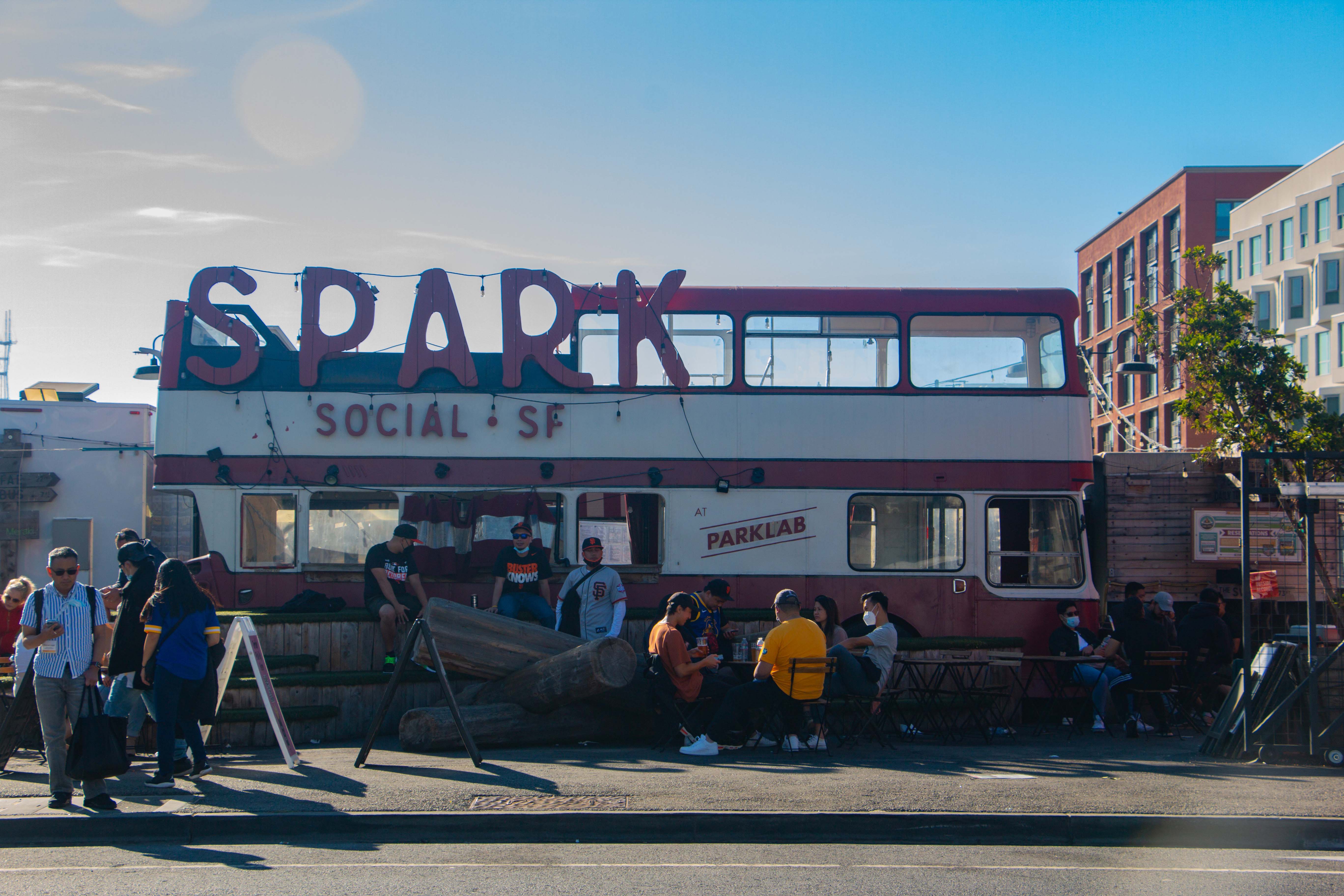
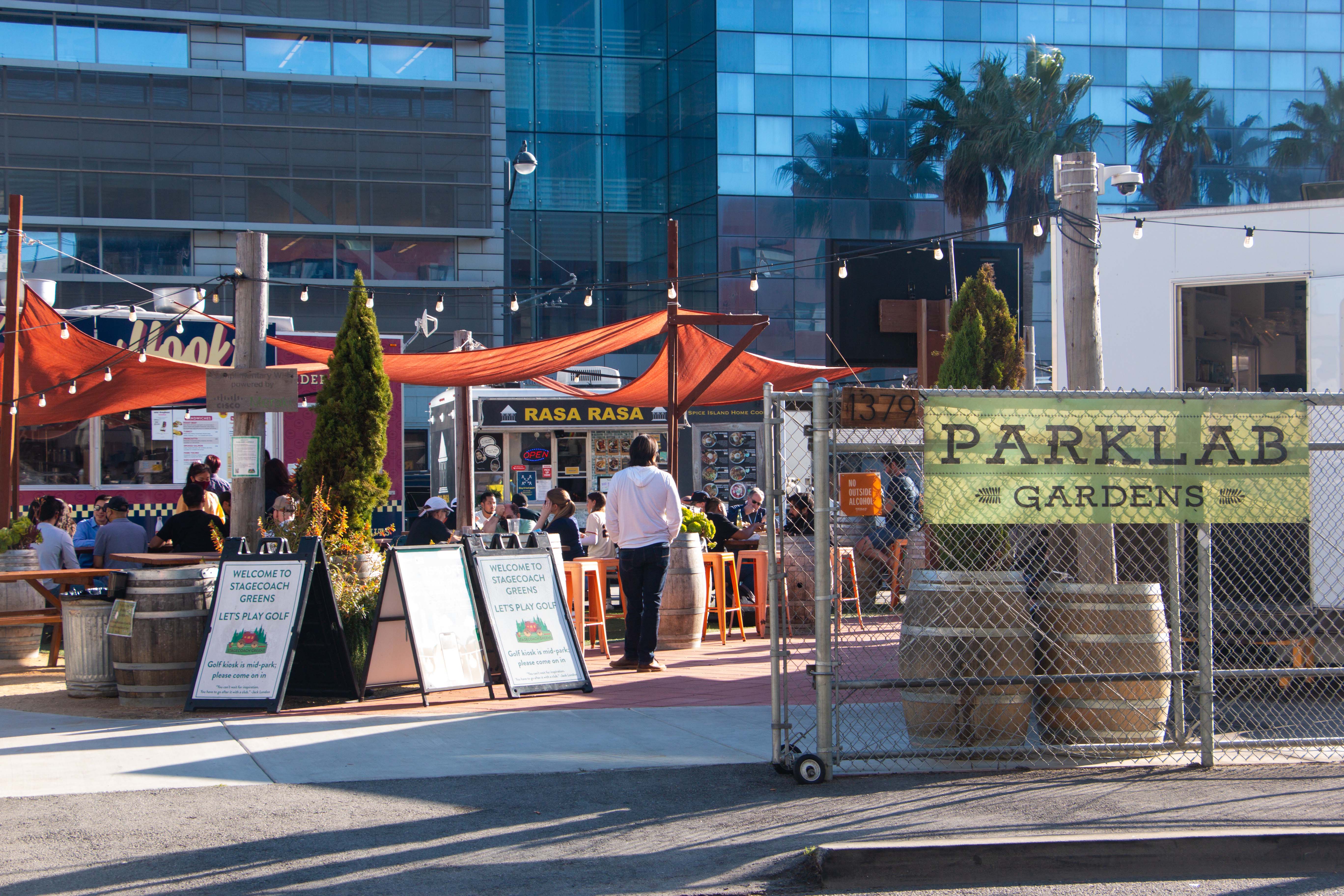
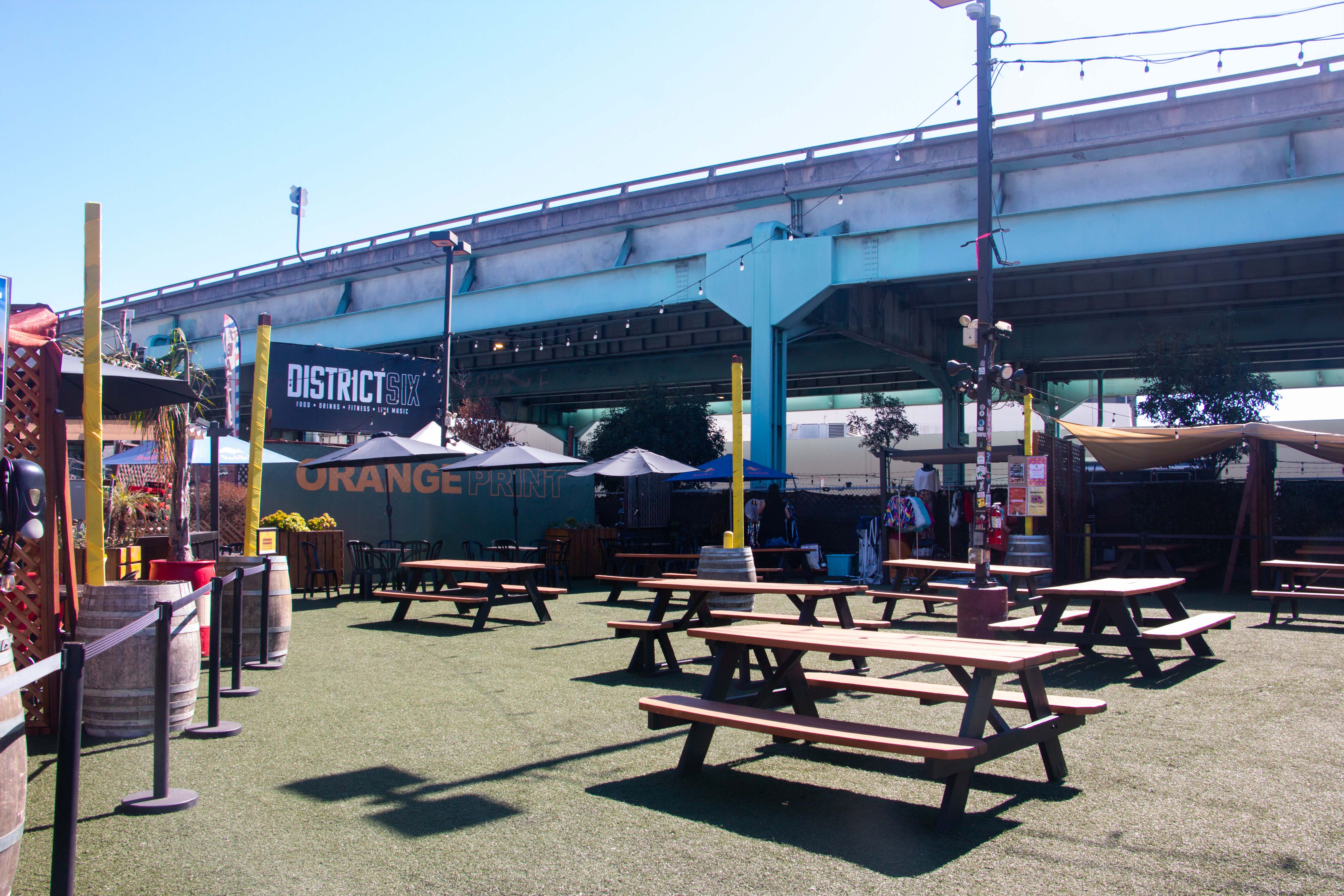
| ParkLab, Spark Social SF, and District Six are among the first food truck parks in San Francisco.
Chef Kitchen has another food truck at District Six, which was also founded by SoMa StrEat Food Park team in 2012. It is surrounded by Soma community supermarkets, whose large parking spaces give it convenient customer access. District Six now operates three permanent food trucks and a beer garden, as well as clothing vendors and even a barbershop. It hosts Friday markets and seasonal events to attract visitors and rotating food trucks.
“They make parties and introduce the businesses that people like. They try to make the place more popular,” Alvarez says.
It’s too early to say how well the food trucks village concept will be received by Berkeley Marina users. But Lisa Bullwinkel, an event producer who has managed the 4th of July and Berkeley Kite Festival at the Marina for 26 years, is enthusiastic. “I think putting food trucks down at the Marina is a really good idea. People don’t want to buy things, but they want to eat,” says Bullwinkel, who introduced food trucks to those festivals a decade ago. She says at big events some fast-food vendors can make $20,000 to $25,000 in a day.
She says the concept might work well with the pending proposal to inaugurate cross-bay ferry service from the Marina. “Especially if the ferry is going to be installed, having food trucks would be really great because people want to eat on their way to work or coming back from work,” Bullwinkel says.
The City of Berkeley has the same idea, and would be prepared to extend its agreement with IPG if ferry service were launched and the food trucks village proved to be popular and successful.
IPG Partner Ivan Smiljanic declined to comment while the deal with the city is pending.
The food trucks concept leaves uncertain the fate of the huge bayside structure adjacent to the proposed site, where Hs Lordship’s restaurant held sway for nearly a half-century before it closed in 2018. City analyst Miller suggests that when people go to the food trucks, they will see the “big, beautiful building,” and will come back to dine when a new restaurant opens. “It [the food trucks village] attracts people, then the whole area will know that building,” said Miller.
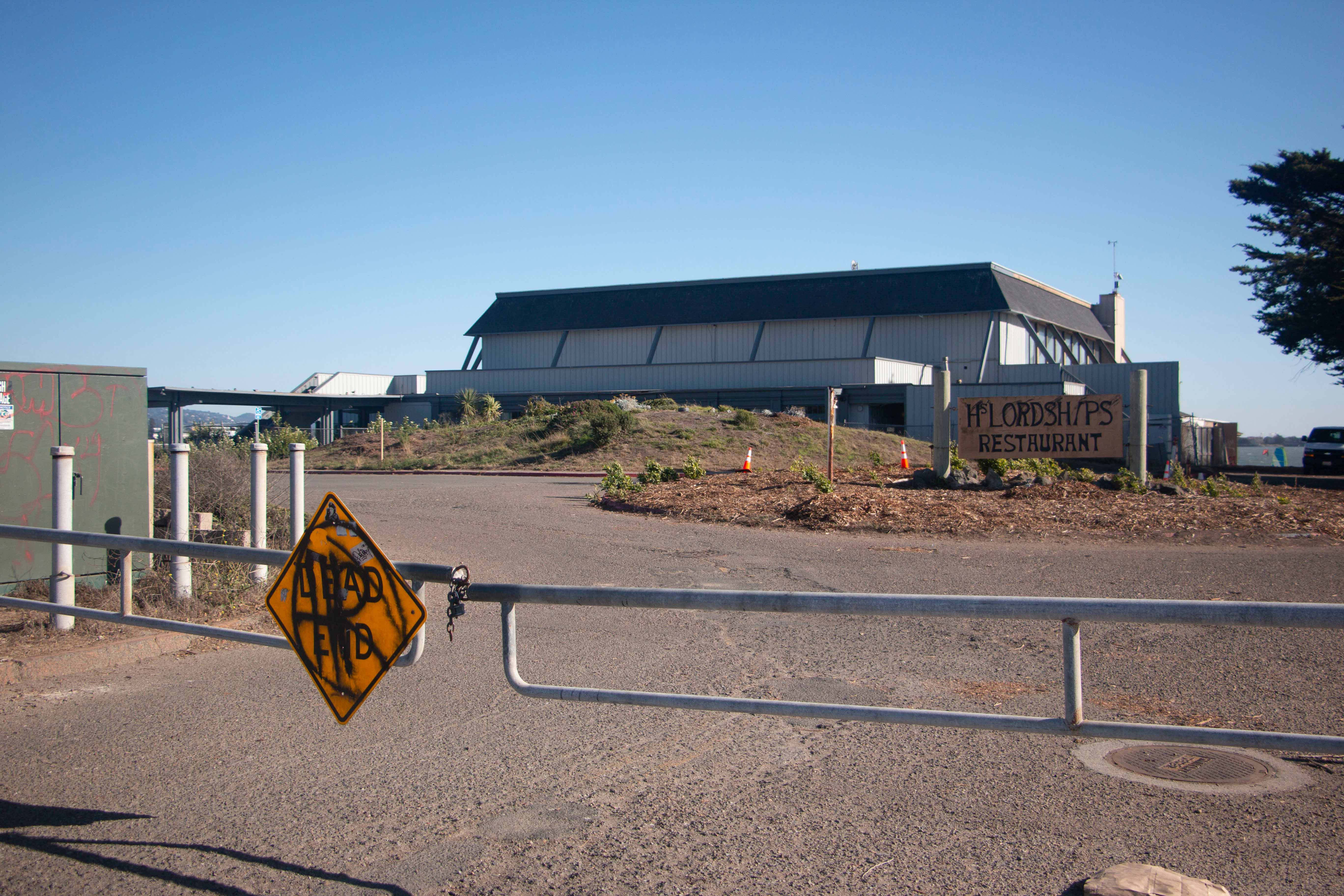
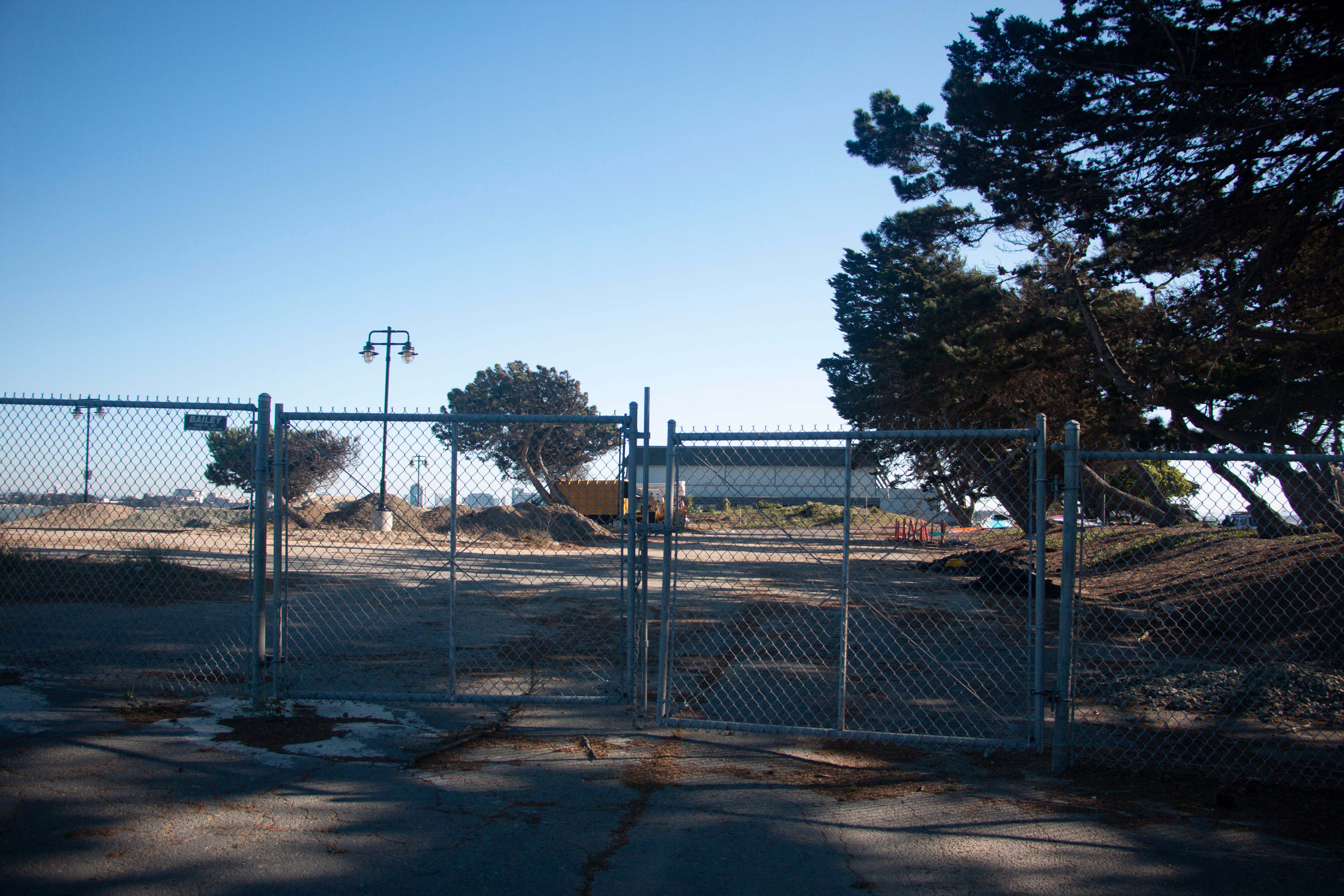
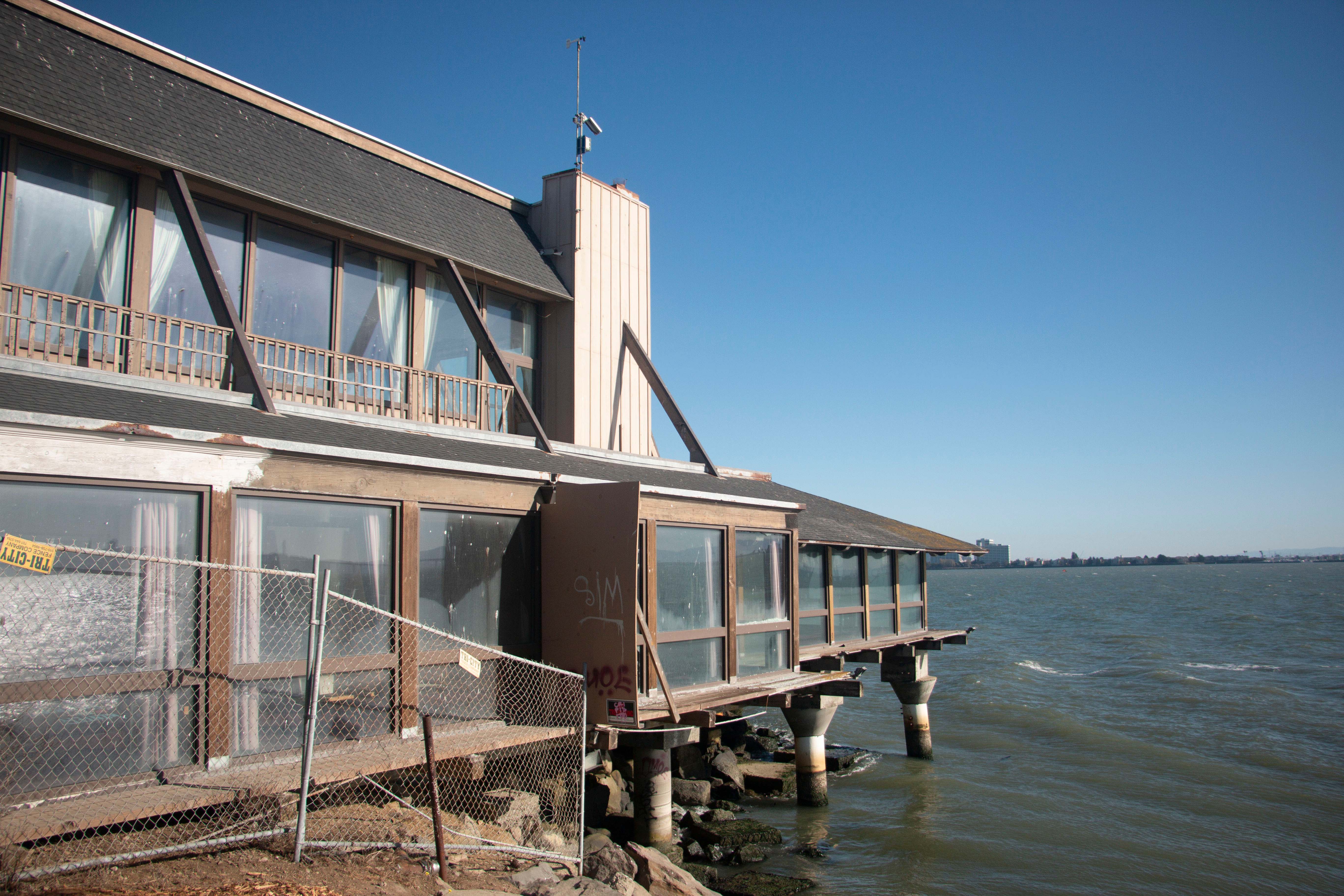
| The adjacent parking lot is empty and quiet since the restaurant Hs Lordship closed. The Cal Sailing Club used to puts wind detectors on the roof of the building.
However, supporters of the concept seem may be overlooking an environmental factor that could make or break their food truck idea: the wind.
The nearby Cal Sailing Club puts two sensors at the site, one on the roof of the now-vacant Hs Lordship, the other on a light post in the lot. “We want to know what the wind speed is here in the water, that’s the closest point,” says 67-year-old windsurfer John Mankey.
Mankey says that in summer, the windiest season of the year, gusts can reach nearly 30 mph, while for most of the year, the average speed fluctuates from 11 to 18 mph; only in winter is the wind typically calm.
Bullwinkel says the food vendors she hosts at various festivals are situated elsewhere in the Marina. “But they were never in the Hs Lordships’ parking lot because honestly, it’s too windy. It’s not a parking lot where you want to hang out very long,” she says. “I don’t know how that’ll work.”
“Food truck is a great idea, good for us,” said Sophie Horiuchi, a Cal Sailing Club member. “I just don’t know how they deal with the wind. Maybe people buy the food and hide in their cars to eat.”